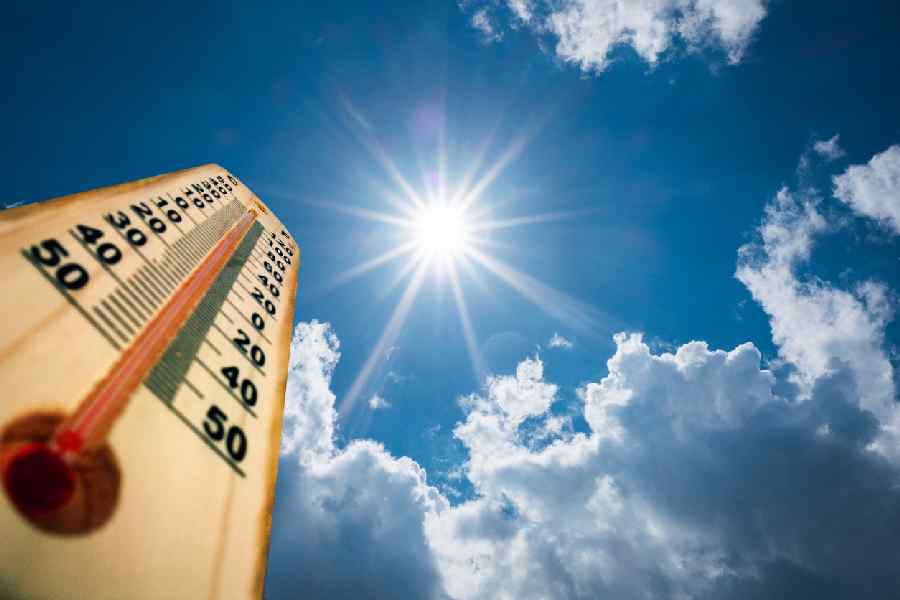During the forthcoming hot weather season (April to June), the Indian Meteorological Department (IMD) forecasts above-normal maximum temperatures across most parts of the country, as indicated in an updated Seasonal Outlook released today. The outlook, accompanied by the Monthly Outlook for April 2024 concerning rainfall and temperature, was unveiled at Mahika Hall, Prithvi Bhawan, New Delhi.
In a hybrid press conference, the IMD highlighted that above-normal maximum temperatures are expected over most parts of the country, particularly in central India and western peninsular India. Dr. Mrutyunjay Mohapatra, Director General of IMD, emphasized, “Normal to below-normal maximum temperatures are expected over some parts of the western Himalayan region, NE states, and north Odisha during this hot weather season.”
Key highlights regarding the temperature scenario from April to June 2024 include:
– Above-normal maximum temperatures are expected over most parts of the country during this period, except for some parts of east and northeast India and pockets of northwest India, where normal to below-normal maximum temperatures are anticipated.
– Normal to above-normal minimum temperatures are anticipated over most parts of the country, except for some isolated areas in northeast and northwest India, where normal to below-normal minimum temperatures are projected.
For April 2024, above-normal maximum temperatures are forecasted over most parts of the country, with isolated pockets in the east, northeast, and northwest India likely to experience normal to below-normal maximum temperatures. Moreover, above-normal monthly minimum temperatures are expected over most parts of India, except for one or two pockets in northwest and northeast India, where normal to below-normal minimum temperatures are anticipated.
Regarding the occurrence of heatwave days during the April to June hot weather season, above-normal heatwave days are expected over most parts of the south peninsula, central India, east India, and the plains of northwest India. Specifically, in April 2024, above-normal heatwave days are predicted over many parts of the south peninsula and adjoining northwest central India, along with some parts of east India and the plains of northwest India.
The IMD also provided insights into rainfall patterns, indicating that for April 2024, averaged over the country as a whole, normal rainfall is expected. Normal to above-normal rainfall is likely over most parts of northwest India and many parts of central India, north peninsular India, and some parts of east and northeast India. Conversely, below-normal rainfall is expected along the east and west coasts, some parts of east and northeast India, and west-central India.
Dr. Mohapatra highlighted the transition from El Niño to ENSO-neutral by April-June 2024, followed by the favoring of La Niña in June-August 2024.
Addressing the potential impact of heatwaves during April to June and April 2024, IMD underscored the significance of proactive measures to safeguard vulnerable populations against heat-related illnesses and infrastructure strain. Efforts by various ministries, including NDMA, Ministry of Jal Shakti, Ministry of Agriculture, Ministry of Health, and Ministry of Power, are underway to mitigate the effects of heatwaves. Preparedness measures, including Heat Action Plans, awareness campaigns, and advisory issuance, are being implemented across heatwave-prone states and districts. Additionally, short-term preparedness and long-term mitigation strategies are being pursued, encompassing various facets such as technological solutions, ecosystem and water management, and urban planning integration.
Furthermore, NDMA has undertaken initiatives to ensure preparedness, including holding workshops, issuing advisories, and developing comprehensive mitigation frameworks. Additionally, interventions such as cool roof technologies, advanced meteorological services, and ecosystem management are being emphasized to address the challenges posed by heatwaves.
Dr. Mohapatra provided updates on agriculture, highlighting a 1.21% increase in the sown area compared to last year, with an estimated wheat production of 112.02 million tonnes. He emphasized that the timely sowing of wheat and the cultivation of climate-resilient varieties mitigate the potential impact of heatwaves on wheat production. The Ministry of Health and Family Welfare has issued advisories to State Health Departments on the 2024 Heat Wave season, while the Ministry of Jal Shakti continues to monitor reservoir storage positions across the country.




